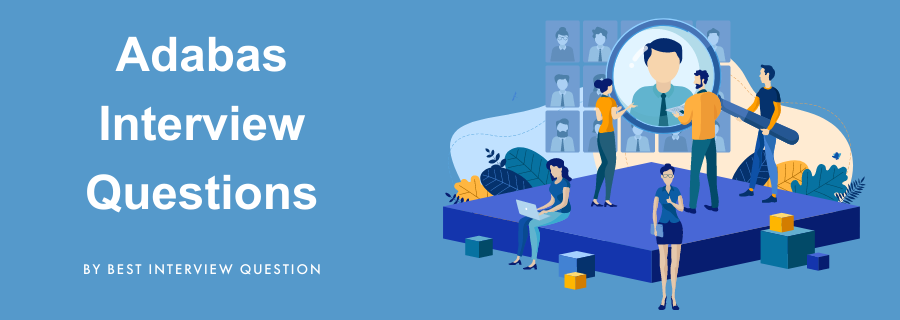Adabas Interview Questions and Answers

Most Frequently Asked Adabas Interview Questions
Here in this article, we will be listing frequently asked Adabas Interview Questions and Answers with the belief that they will be helpful for you to gain higher marks. Also, to let you know that this article has been written under the guidance of industry professionals and covered all the current competencies.
Adabas (Adaptable Database System) is fundamentally a field-oriented database Management System. Retrievals of data and updating of data are performed on the field level. Adabas is also an inverted list database, and Adabas is regarded as one of the significant inverted-list DBMS packages. Adabas runs on LUW ( Linux, Unix, and Windows ) platform and on the mainframe. Those applications which require very much reliable and high-performance data processing for business transactions mostly use Adabas.
Why it is used
- Adabas make use of innovations and emerging new technologies. As a result, it provides incredibly high-speed transaction , scalability, and even availability at such a low cost
- Adabas gives high scalability and throughput for supporting data growth.
- Adabas protect the organization from security breaching
The advantages of Adabas are:-
- The transaction is Reliable under heavy workload
- Provides a very high performance
- Allows Multiple data integration implementation
- Administration cost is low since it is designed to get administered by either one or two DBA’s
The key features of Adabas are:-
- Scalable:- Adabas can handle the massive amount of data and processing them at a speed of more than 2 million commands per second.
- High transaction speed:- Adabas has the fastest transaction speed.
- High Security:- ADBAS can secure the data in any circumstances.
- Compliance:- Adabas provides an archiving tool which can be used to protect the data.
- Disaster recovery:- Adabas provide real-time improvement.
- SQL Access:- Adabas provides the SQL access to business intelligence tools and also to external application.
- Portability:- Adabas can be moved between the LUW ( Linux, Unix, and Windows ) platforms and mainframe.
This is a fundamental Adabas interview questions
Adabas is an acronym for the adaptable database system.Adabas (Adaptable Database System) is fundamentally a field-oriented database Management System which was developed by Software AG in the year 1971 to run on IBM mainframes.
DBID is an acronym for database ID. Within an environment of Adabas, server user can have multiple databases running at the same time. DBID represents a unique ID of the database. So each database running within an Adabas server environment has a different DBID and the FNR ( file number)
Associator is basically one of the datasets of the Adaptable Database System. Associator includes:-
- Number of those Adabas files that have been allocated in a data
- storage.
- Address converter, FDT, and Inverted list.
- The physical location of the file extents in the data storage.
Point to be noted: Go through this Q&A very thoroughly as this is one of the critical Adabas interview questions.
| S.no | Null compression | Default compression |
|---|---|---|
| 1. | Compress Null value | Removes the trailing spaces in alphanumeric fields and leading zeros in numeric fields |
| 2. | The field must have the ‘NU’ designation | The field need not have the designation |
FIND –
- FIND searches for the records according to the given search criteria from an inverted list.
- It gets the list according to the value which was provided in the search criteria
- It also receives the ISN (internal sequence number) list according to the search criteria and orders the ISN list and finally finds the RABN (relative Adabas block number) using sorted ISN list
- Lastly, it gets the exact records from the data storage and then displays the record.
READ by descriptor –
- READ reads the complete list of records from an inverted list
- Even if the record does not match according to the search criteria, it reads the next records starting from descriptor value and then it gets the ISN ( internal sequence number) value and finally gets RABN (relative Adabas block number) from an Address converter
- Lastly READ gets the records and displays the record
